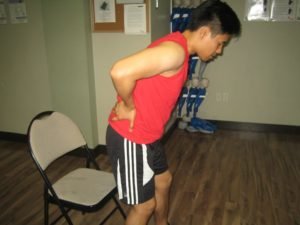Oftentimes, a slipped disk or herniated disk occurs in the lower back. This is considered as one of the usual cause of low back pain as well as leg pain. Many individuals will experience low back pain at some point in their lives. Most of these cases involve lower back and leg pain triggered by a herniated disk. Even though this can cause pain, many individuals feel better in just a few weeks or months of non-surgical treatment.
What is a herniated disk?
A herniated disk tends to occur when the jelly-like nucleus is pushed against the exterior ring due to wear and tear or an abrupt injury. The pressure against the exterior ring can cause lower back pain.

The moment the nucleus herniates via the exterior ring, pain in the lower back can improve. On the other hand, sciatic leg pain will increase since the jelly-like substance irritates the spinal nerves. In addition, it also places pressure on these sensitive spinal nerves, resulting to pain, weakness or numbness in one or both legs.
Possible causes
In most cases, a herniated disk is linked to the natural aging of the spine. Among children and young adults, the disks possess high water content. Due to the aging process, the disks start to dry out and weaken. The disks start to shrink and the spaces between the vertebrae will narrow down. Take note that this normal aging process is called as disk degeneration.
What are the symptoms?
In most cases, low back pain is the initial symptom. The pain can persist for a few days and then improve. It is often followed by the onset of leg pain, weakness or numbness. The leg pain radiates below the knee and often into the foot and ankle. It is often described as moving from the back or buttock down the leg and into the foot. The symptoms that can manifest include the following:
- Back pain
- Leg or foot pain
- Weakening in the leg or foot
- Tingling sensation or numbness in the leg or foot
- Lack of bowel or bladder control
It is important to note that not all individuals will experience pain as the disk starts to degenerate. It can be a challenge to the doctor to determine whether a disk that is wearing out is the exact cause of the pain.
Treatment
Most cases of a herniated disk in the lower back will steadily improve over a span of several days to weeks. Essentially, many individuals are free of symptoms by 3-4 months. On the other hand, some individuals can experience episodes of pain during the recovery period.
Non-surgical treatment
Conservative care measures are part of the first course of treatment if neurological deficits such as difficulty walking or muscle weakness are not present. If you want to learn more about these treatment options used, register for a first aid class. (Read here for more information about the classes.)
- Bed rest for 1-2 days can help ease severe back pain. The individual should not stay off the feet longer though. Take regular breaks throughout the day but avoid extended periods of sitting. All movements must be slow and properly controlled.
- Anti-inflammatory medications such as naproxen or ibuprofen can be given to help reduce the pain.
- Physical therapy involves specific exercises that will strengthen the lower back and abdominal muscles.
- Epidural steroid injections are administered into the back to minimize local inflammation.
